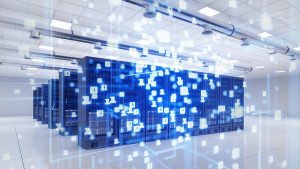 The mission of the Department of Energy (DOE) is "to ensure America's security and prosperity by addressing its energy, environmental, and nuclear challenges through transformative science and technology solutions." Technology plays a huge role in both the research surrounding and protection of energy resources.
The mission of the Department of Energy (DOE) is "to ensure America's security and prosperity by addressing its energy, environmental, and nuclear challenges through transformative science and technology solutions." Technology plays a huge role in both the research surrounding and protection of energy resources.
The DOE may lead the government in their use of supercomputer technology. In fact, supercomputering is one of the key focus areas in the agency's budget. This spring the DOE issued a contract that will allow them to build the world's most powerful computer with a performance greater than 1.5 exaflops. Supercomputers, like the one being built, provide researchers with the needed speed and scale to conduct scientific modeling and simulations as well as utilize AI and analytics for activities as diverse as manufacturing and public health.
Of course, the security of the data running through these supercomputers, as well as the national power grid itself is of paramount focus for the DOE. To support these growing needs, the DOE is looking to blockchain as a way to secure energy delivery and more.
We've pulled together a list of upcoming events that will help the DOE, as well as the companies that serve it, better understand the technologies that can ensure our energy supply remains secure and efficient.





 The operating challenges around budgets, resources, and legacy technology we see at the Federal level are amplified at the state and local level. Just because these groups are responsible for a smaller population does not mean their problems are smaller. On the contrary, historically low staffing levels and a geographically-limited pool of talent feed into the
The operating challenges around budgets, resources, and legacy technology we see at the Federal level are amplified at the state and local level. Just because these groups are responsible for a smaller population does not mean their problems are smaller. On the contrary, historically low staffing levels and a geographically-limited pool of talent feed into the  We've been watching the use of
We've been watching the use of 
